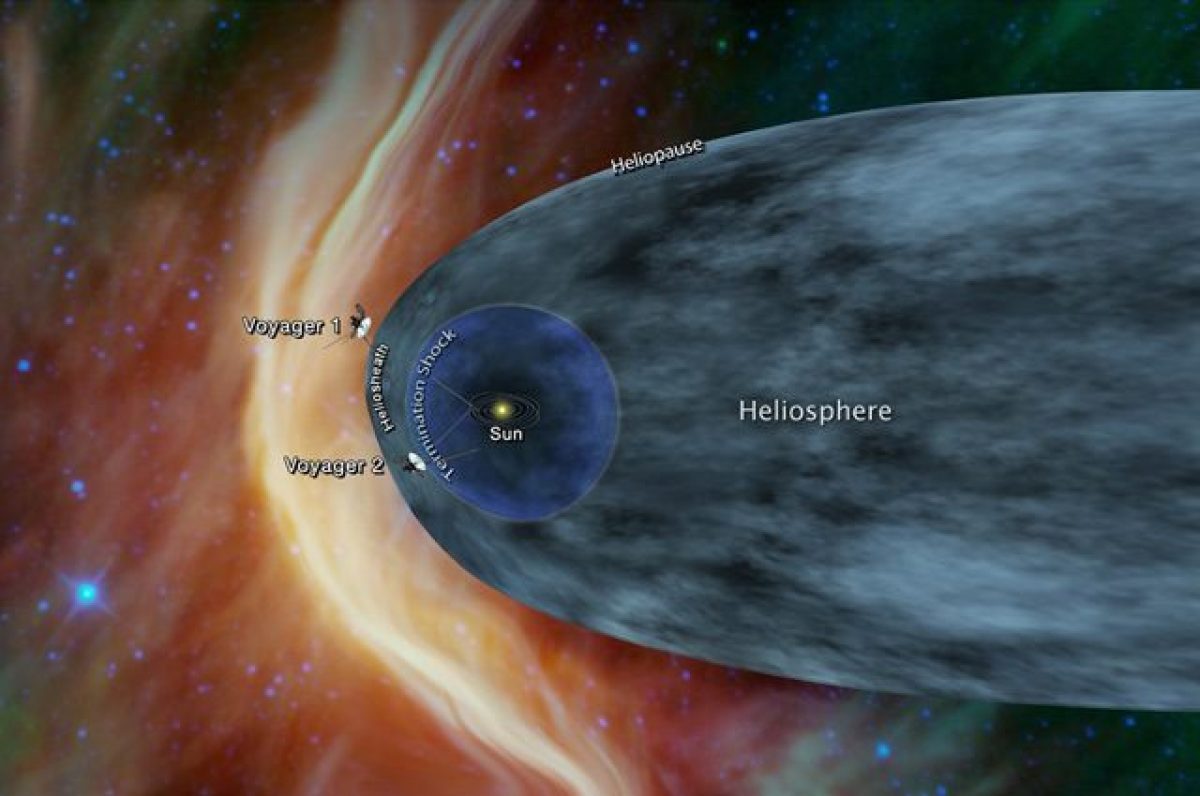On October 29, NASA mission operators were able to send a series of commands to the Voyager 2 space probe for the first time since last March. The radio antenna, equipped with a 70-meter diameter reflector that allows communication with the probe traveling in deep space, had in fact been deactivated for repairs and updates. Voyager 2 responded by confirming that they received the call and executed the commands without any problems. The call to Voyager 2 was proof of the correct functioning of the updates recently installed on Deep Space Station 43, the only satellite dish in the world capable of sending commands to the probe.
The Voyager 2 she was one of the first explorers of the outer solar system. It was launched on 20 August 1977 from Cape Canaveral aboard a Titan III rocket, shortly before the sister probe Voyager 1, in an orbit that would have taken it to visit some planets. The orbit in which it was placed led it to touch the two giants of the solar system, Jupiter and Saturn, the primary objective of its mission. Taking advantage of a rather rare planetary alignment, the probe was directed towards Uranus and Neptune and even today it is from Voyager 2 that most of the information we have on these two planets comes. On November 5, 2018, Voyager 2 passed the heliopause becoming the second man-made object to exit interstellar space, preceded by Voyager 1. Today the probe is located more than 18.8 billion kilometers from Earth; the communications signals take 17 hours to reach it and the same amount to return to Earth, 34 hours overall to understand if the information has been received and the commands executed or not. All this is still possible because the plutonium generator installed on the Voyager it will provide energy for another 10-15 years.
The spacecraft transmits scientific data from interstellar space, the region outside the heliosphere. All the planets of our Solar System are enclosed in a magnetic bubble – the heliosphere – sculpted in space by the constantly outflowing material from the Sun, the solar wind. Beyond this bubble is interstellar space – the ionized gas and magnetic field that fill the space between the star systems of our galaxy.
Among the updates to DSS43, the codename for Canberra’s antenna, are two new radio transmitters (one of the two, the very one that was used to talk to Voyager 2, had never been replaced in 47 years). The engineers also updated antenna thermal control systems and other obsolete electronic equipment. The successful call to Voyager 2 is just a first indication that the antenna will be fully operational again in February 2021.
“What makes this update unique is that we are working on all levels of the antenna, from the pedestal to the feedcones in the center of the dish. This test communication with Voyager 2 tells us that the work we are doing is in line with our expectations, ”said Brad Arnold, project manager DSN at NASA’s Jet Propulsion Laboratory.
Worldwide network
The Deep Space Network (DSN) consists of three huge structures used primarily to communicate with spacecraft operating beyond the orbit of the Moon. The placement of the three structures ensures that almost any spacecraft can communicate with at least one of the structures at any time:
- il Goldstone Deep Space Communications Complex, nel deserto del Mojave, in California
- the Madrid Deep Space Communication Complex, 60 km west of Madrid, Spain
- the Canberra Deep Space Communications Complex, 40km southwest of Canberra, Australia.
To reduce the possibility of interference, each complex is located in semi-mountainous areas with the antennas surrounded by natural reliefs. The particular geographical distribution, ie the fact that each antenna is approximately 120 ° spaced from the other two, allows to constantly follow the interplanetary probes despite the rotation of the Earth. Although there is the Canberra listening complex, the coverage provided by the DSN for the southern hemisphere is limited, as there are no locations in South America or Africa.
Voyager 2 is a rare exception. In 1989, to make a close flyby of Triton, the moon of Neptune, the probe flew over the north pole of the planet. That flyby caused it to deviate south from the planets of its trajectory and that has since become its new course. The distance and direction do not allow the probe a line that puts it in “sight” of the radio antennas located in the northern hemisphere. The faster twin of Voyager 2, Voyager 1, after passing Saturn took a different path and communicates with the Earth through the antennas of the two DSN structures located in the northern hemisphere. Communication with the probes takes place in the S band for the uplink of the commands while for the data downlink the frequencies in the X band are used.
During the maintenance period of the Canberra antenna, mission operators have always been able to receive “health” updates and scientific data from Voyager 2, thanks to the three radio antennas with 34-meter reflectors installed at the same structure , even though it cannot send commands to the probe.
DSS43 began operations in 1972 (five years before the launch of Voyager 2 and Voyager 1) and at the time had a reflector of only 64 meters. It was expanded to 70 meters in 1987 and has since undergone a number of updates and repairs. Engineers overseeing these latest updates have stated that this is one of the most significant refurbishments the antenna has received and this is also the longest time it has been offline in over 30 years of honorable service.
The DSS43 antenna is a highly specialized system; there are only two other similar antennas in the world, so keeping the antenna turned off for a year is not an ideal situation for Voyager or many other NASA missions, ”said Philip Baldwin, operations manager for the Space Communications (SCaN) program. and Navigation) by NASA. «The agency has decided to carry out these updates to ensure that the antenna can continue to be used for current and future missions. For an antenna that is almost 50 years old it is better to be proactive than reactive with critical maintenance activities ».
The repairs will also benefit other missions, such as the rover Mars Perseverance which will land on the Red Planet on February 18, 2021. The DSN will also play a fundamental role in the exploration missions of the Moon and Mars, ensuring communication and support for navigation.
The Deep Space Network is managed by the JPL. The Canberra Station is operated on behalf of NASA by Australia’s National Science Agency and the Commonwealth Scientific and Industrial Research Organization. The Voyager probes were built by JPL, which continues to follow the path of both of them in space.
Source: NASA
Read more on ForumAstronautico.it
Developments and updates on this news are available on ForumAstronautico.it
–
–


